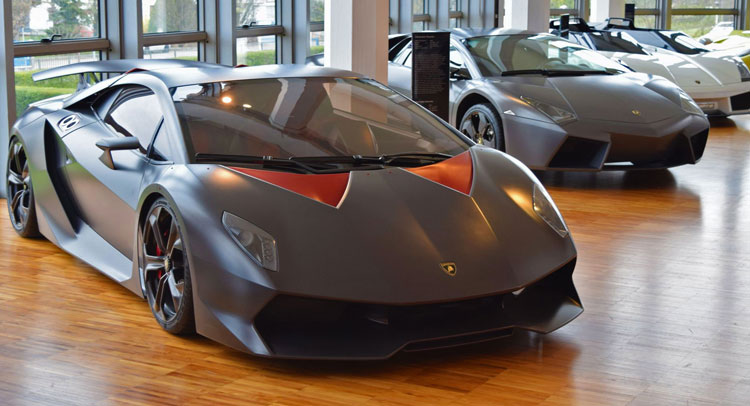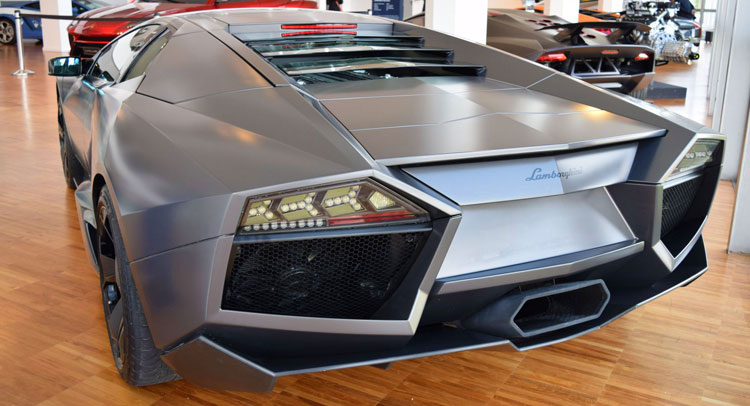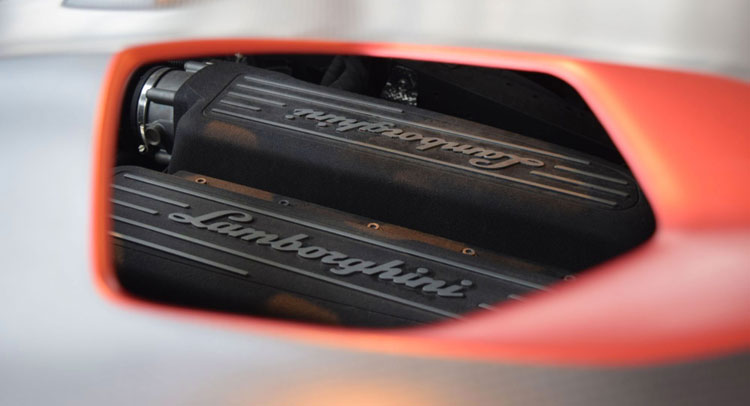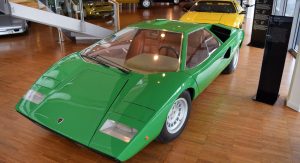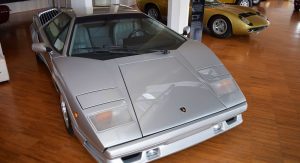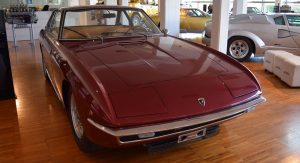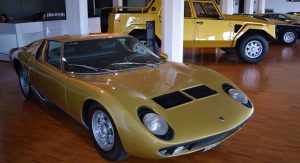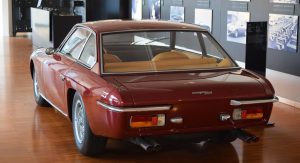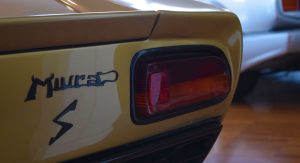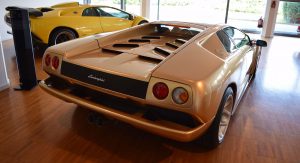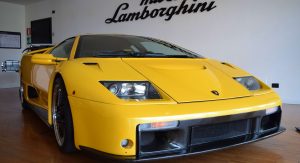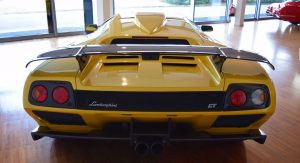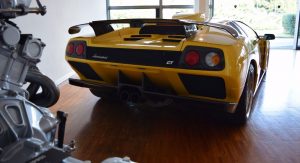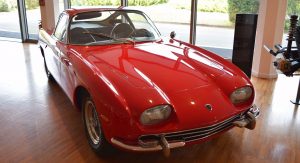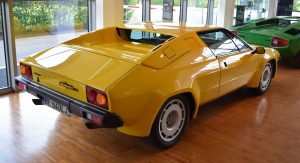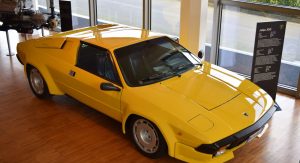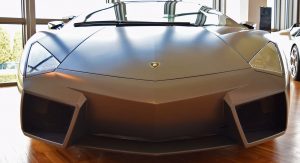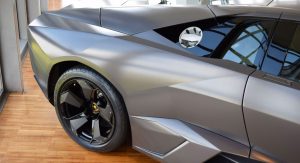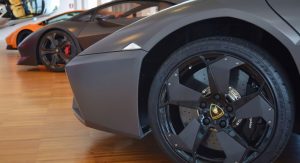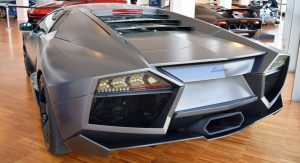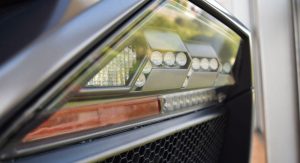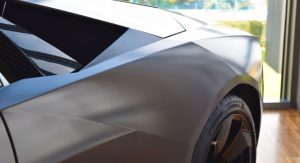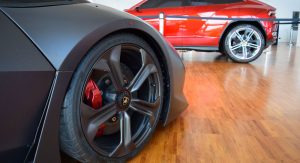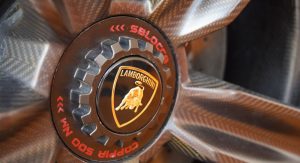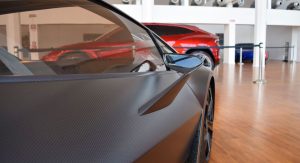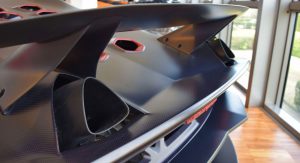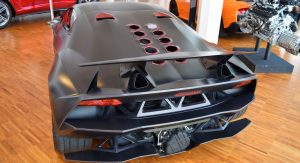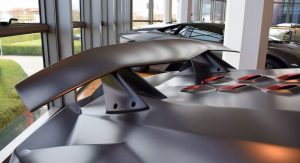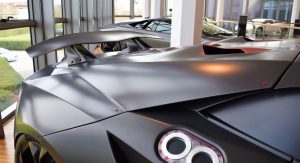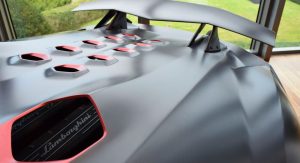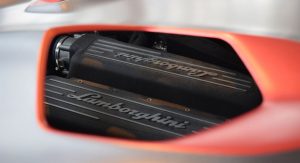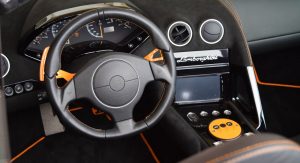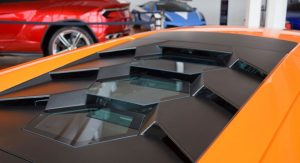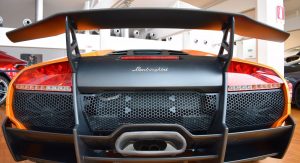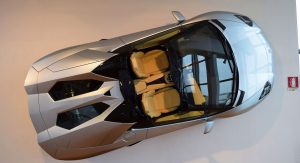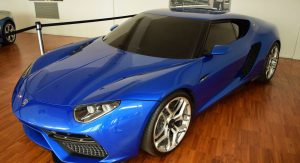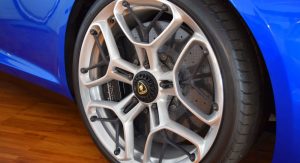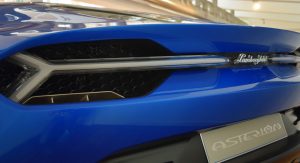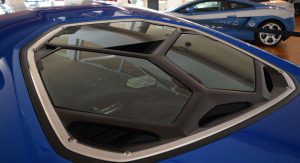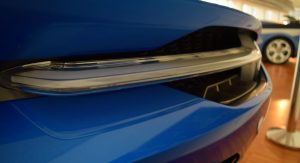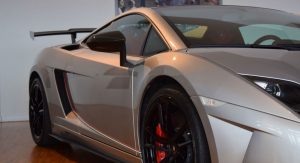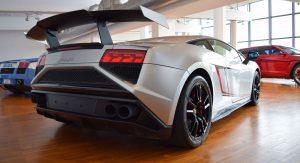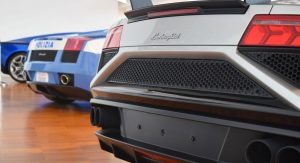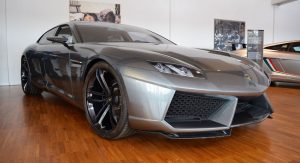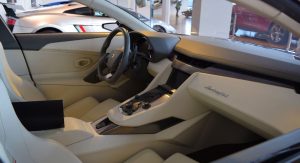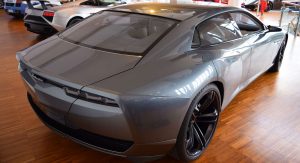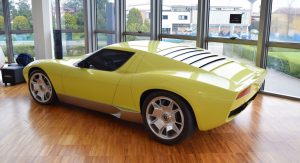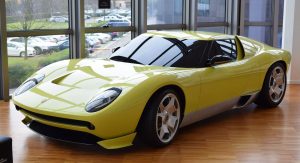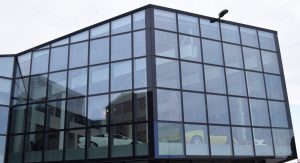Ever since being founded 53 years ago, Lamborghini has been considered as one of the quintessential supercar manufacturers.
While it may not have the motorsport pedigree of Ferrari, the firm based in Sant’Agata Bolognese produces some of the finest cars on earth. Fittingly, it also has a very special museum open to the public and last week, we checked it out.
The Lamborghini museum is particularly special as unlike some of its rivals, it’s actually located within the marque’s headquarters, just metres away from the factory. To revheads, it’s immediately identifiable thanks to the myriad of towering glass walls which over the years, have displayed the finest raging bulls ever conceived.
Upon entry, the formative years of the carmaker are displayed through the likes of the original 350GT, Jalpa, Countach, Miura and a stunning gold LM002. Potentially the highlight of the first level, this V12-powered behemoth sits on a massive set of 335 mm tires at all four corners, making the record-breaking 305 section front tires of the Camaro Z/28 look pedestrian. Sitting in the far corner was a brutal Diablo GT, arguably one of the company’s craziest production models.
For classic supercar lovers, this area of the museum is an orgy of priceless metal and timeless design but for us, the real action started on the second level.
After traipsing up the spiral staircase, we were left stunned to see a stealthy Lamborghini Reventon on display, one of just 20 examples ever produced. Based around the Murcielago LP640 and previewing styling elements from the preceding Aventador, the Reventon remains one of the firm’s most revered limited-series models created. However, compared to the car next to it, even this stealth-bomber inspired animal looked restrained.
Sitting so low that it was almost hitting the ground, the Sesto Elemento displayed may ‘only’ be based around the Gallardo LP570-4 Superleggera, but thanks to its 999 kg weight, it hits 100 km/h (62 mph) in just 2.5 seconds, making it the quickest Lamborghini ever. Beyond its potent powertrain, the Sesto Elemento is a real exercise in minimalism and adorned with body panels bathed in carbon fiber.
A close inspection reveals that the rear clamshell is nothing but a thin piece of carbon fiber covering the engine, absent of any fireproofing or sound-deadening. Even lightweight plastic has been used instead of glass for all the windows while the only obvious painted surfaces are a few bright red highlights. Just 20 units were ever produced, each restricted to private track use but on the odd occasion, Sesto’s have been filmed on the street.
Two of Lamborghini’s most recent and important concept cars were also displayed, the Urus SUV and the Asterion LPI910-4 Hybrid. While the sleek Asterion won’t make it to production, the Urus will hit showrooms in 2018 and in the flesh, both display all the sharp and angular lines that one would expect from the firm. Also at the museum was the original Estoque concept.
Unveiled in 2008, the Estoque previewed a premium sedan from Lamborghini but following the global financial crisis, the project was scrapped, leaving behind one of the best looking five-door cars ever penned. While the premium sedan market has boomed since the Estoque’s release, Lamborghini is hedging its bets on the Urus proving even more popular and being a fitting third model to its range. Only time will tell if it’s a success.
Numerous other concepts are displayed publicly by Lamborghini, including the Gallardo-based Concept S and the modern-day Miura concept. What’s more, the marque even has one of its models hanging on the wall, in the form of an Aventador Roadster, albeit without an engine.
True, the facility might not be as big as some other auto museums, the insanity of the cars displayed make it truly special and worth adding to anyone’s bucket list.



